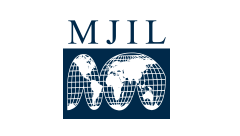Abstract
On the night of May 2, 1997, some twenty-five abandoned Serb houses were set on fire in the Croat-controlled municipality of Drvar, part of the Muslim-Croat Federation of Bosnia and Herzegovina. It was clear from all the circumstances that Croats organized the arson of houses in Drvar to obstruct the return of the original Serb residents to the area. Croat authorities then made a concerted effort to resettle displaced Croats in Drvar in order to solidify a stretch of "ethnically-pure" territory adjacent to the Republic of Croatia. These displaced Bosnian Serbs are just a few of the estimated 2.3 million Serbs, Croats, and Bosniaks (Bosnian Muslims) who left or were driven from their homes during and in the immediate aftermath of the Bosnian war. This dislocation resulted from the use of "ethnic cleansing" campaigns in which local, regional, and higher authorities acted according to a premeditated plan and seized or consolidated control over territory by forcibly displacing or killing members of opposing ethnic groups. Many of those who were driven from their homes through different techniques that often involved violence and intimidation are now being prevented from returning home through various forms of legal and bureaucratic obstruction by the parties to the conflict.
Recommended Citation
Eric Rosand,
The Right to Return Under International Law Following Mass Dislocation: The Bosnia Precedent?,
19
Mich. J. Int'l L.
1091
(1998).
Available at:
https://repository.law.umich.edu/mjil/vol19/iss4/4
Included in
Human Rights Law Commons, Immigration Law Commons, International Law Commons, Military, War, and Peace Commons

